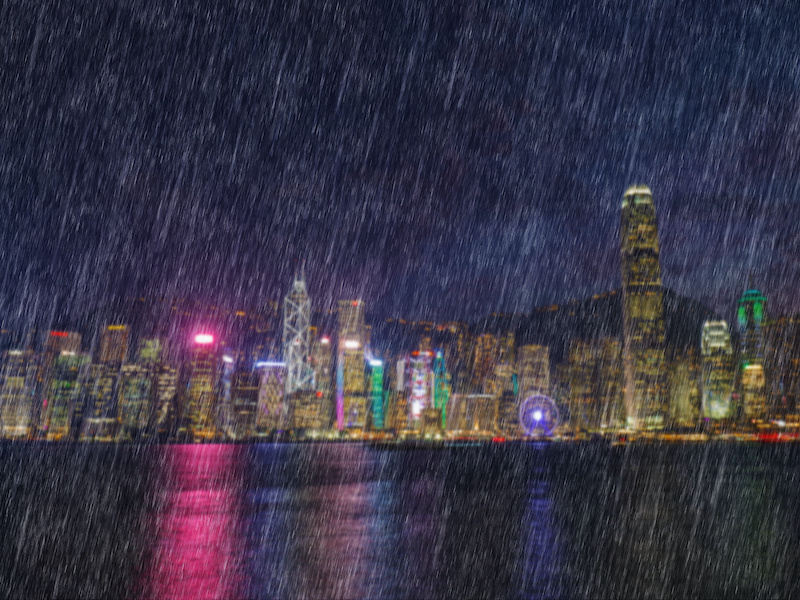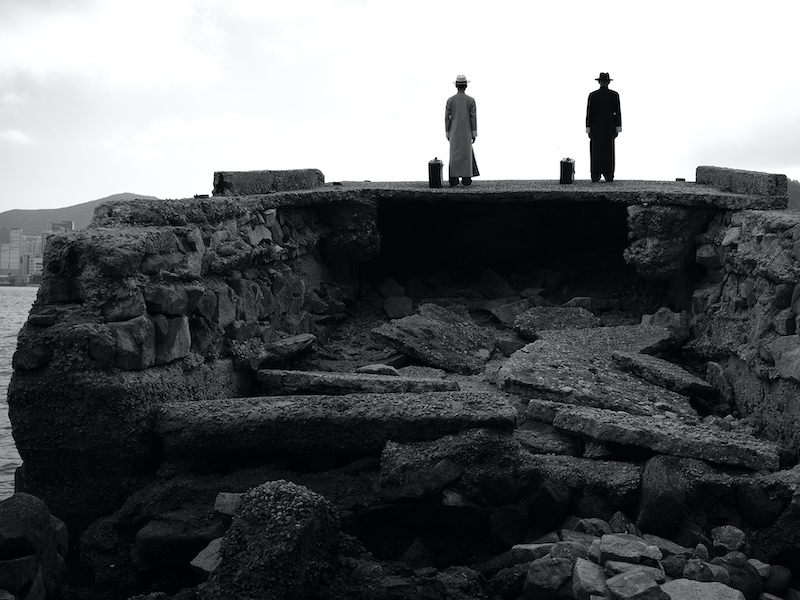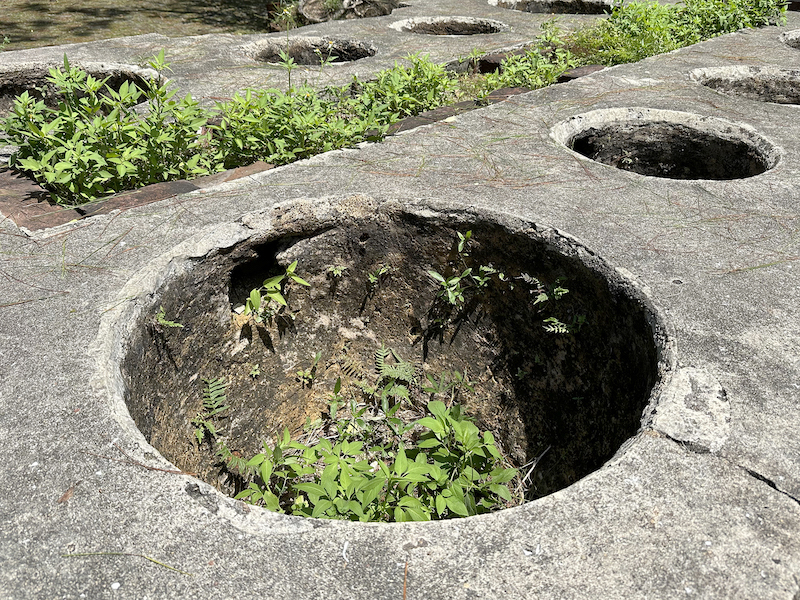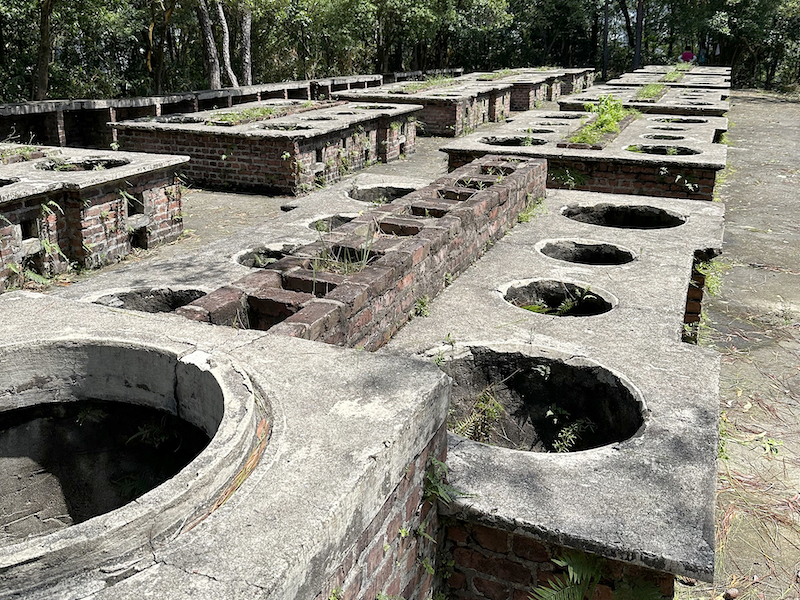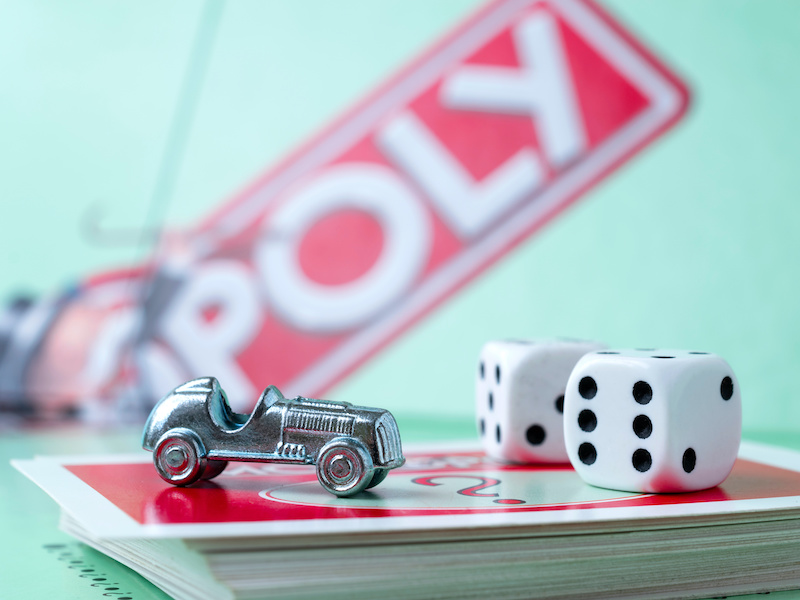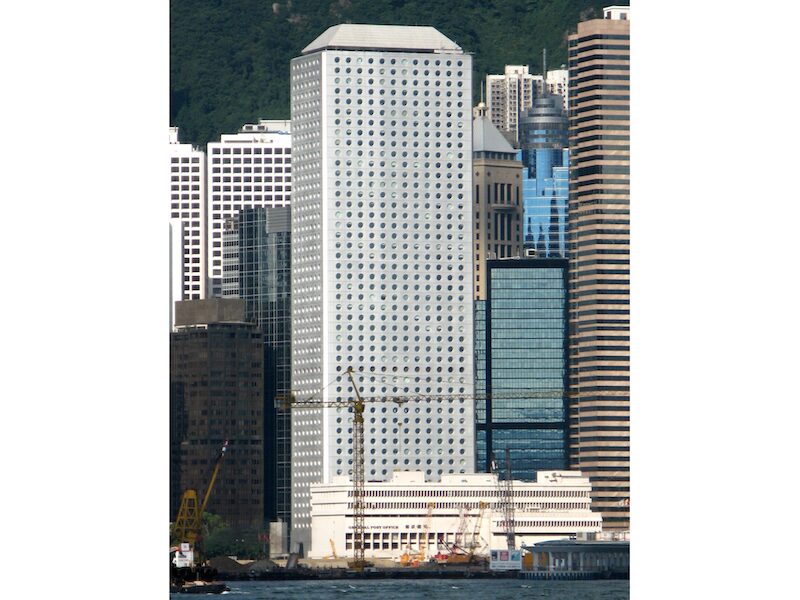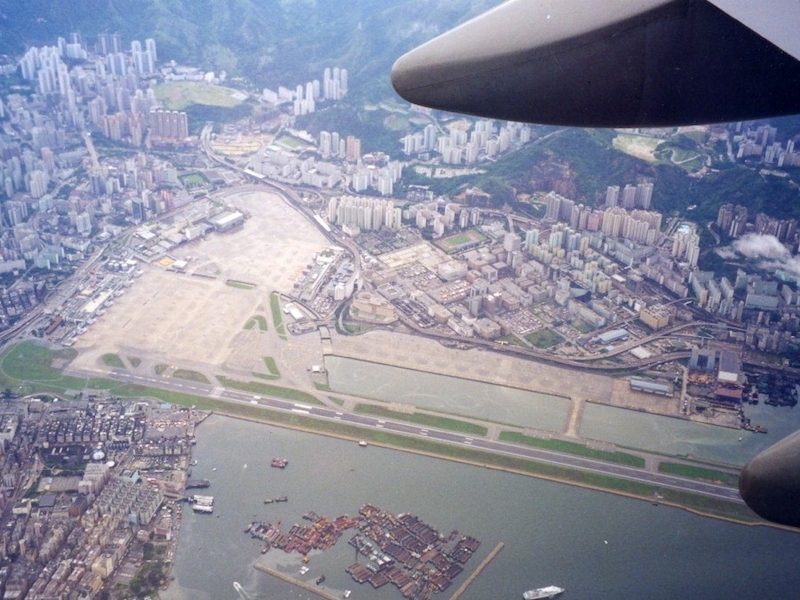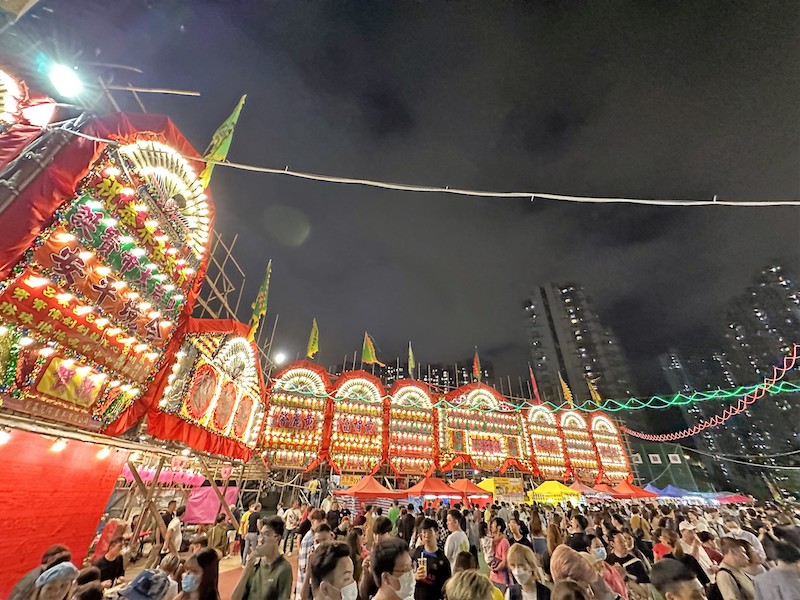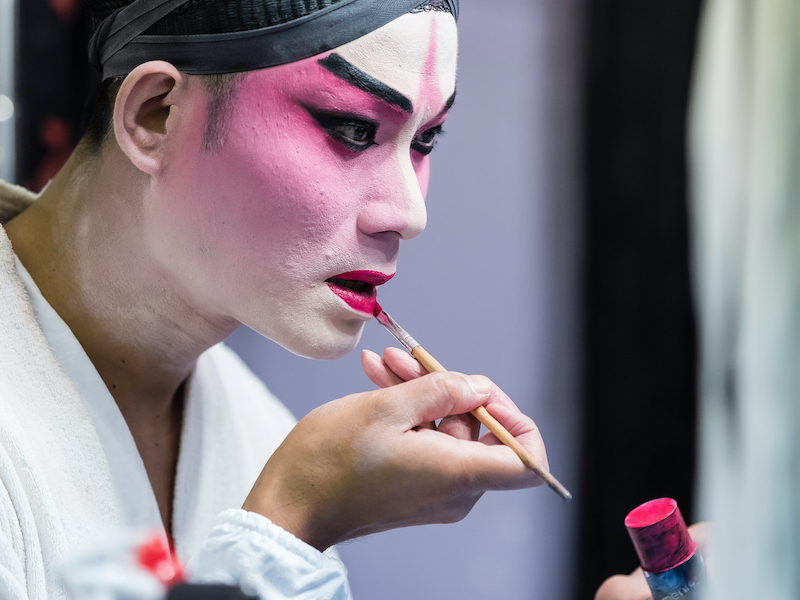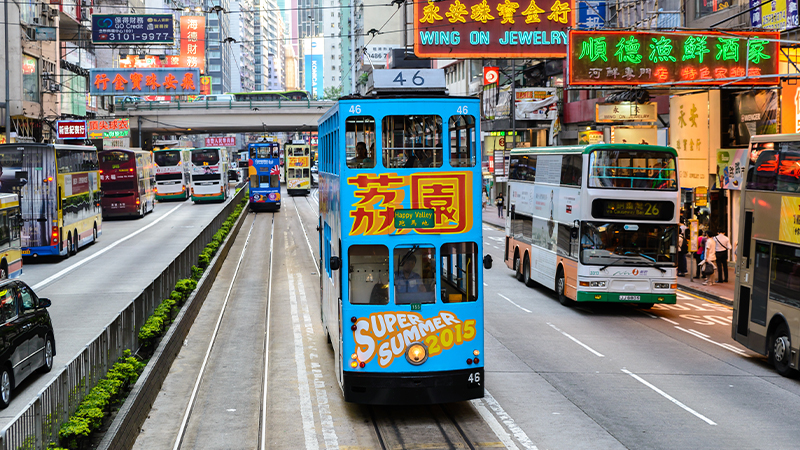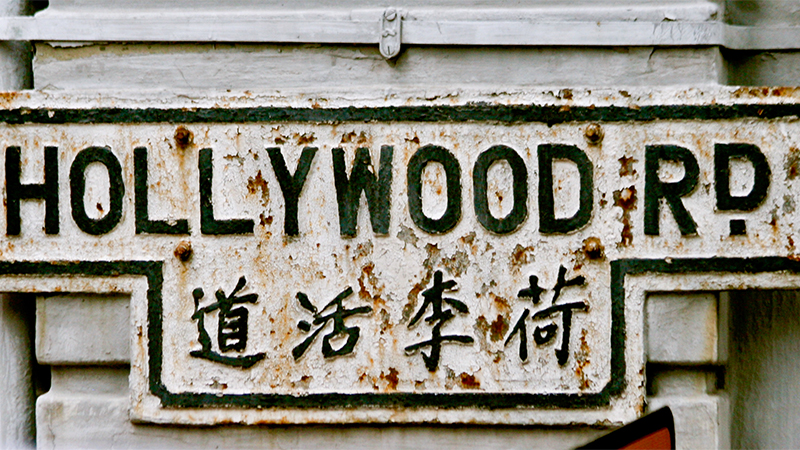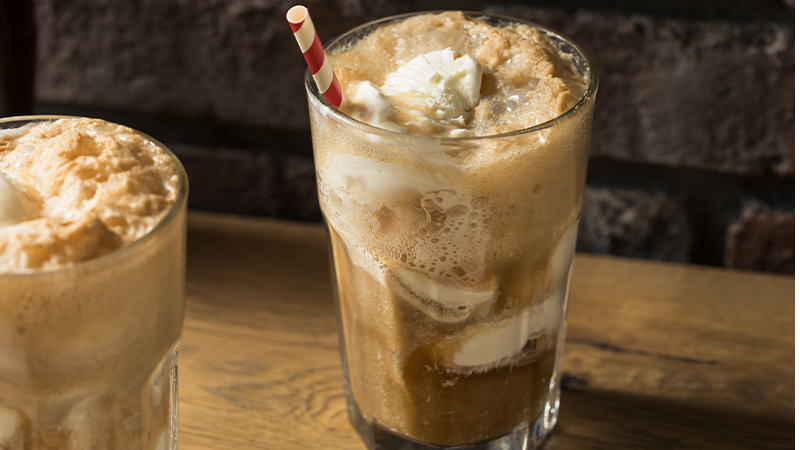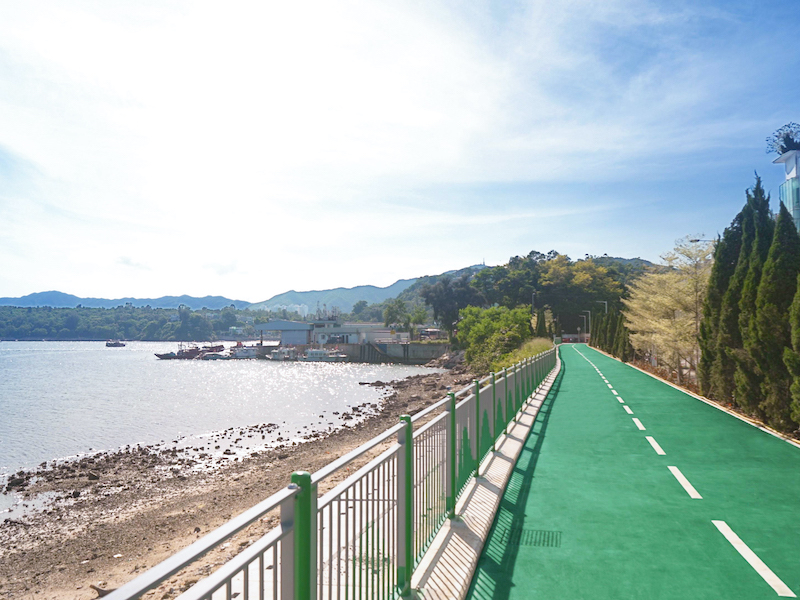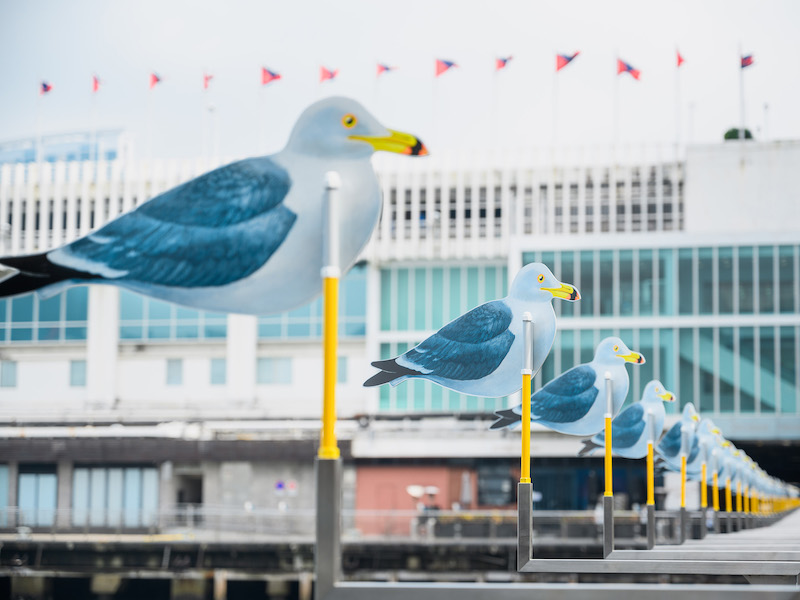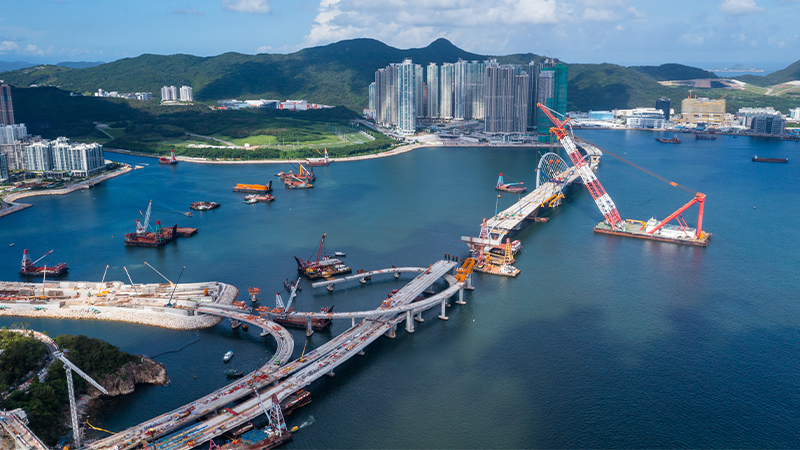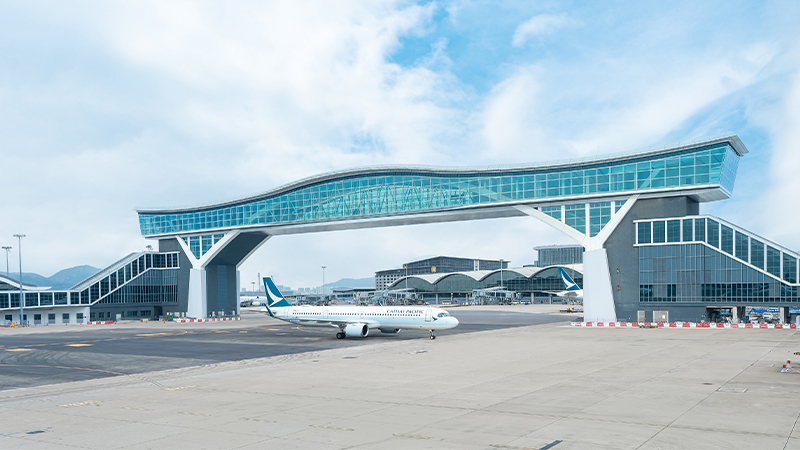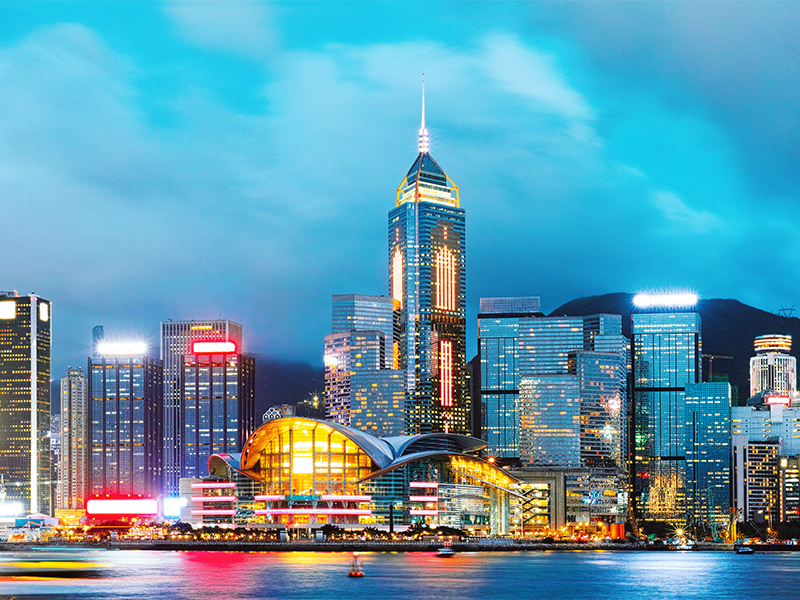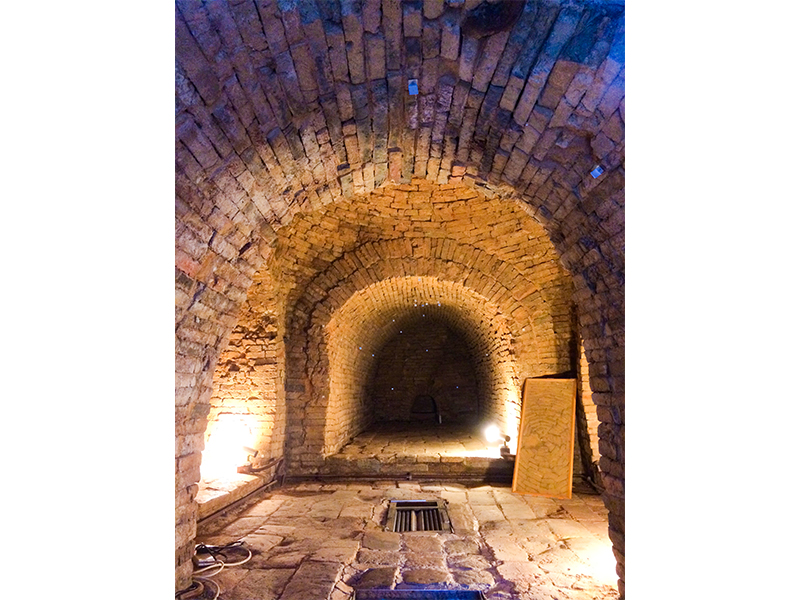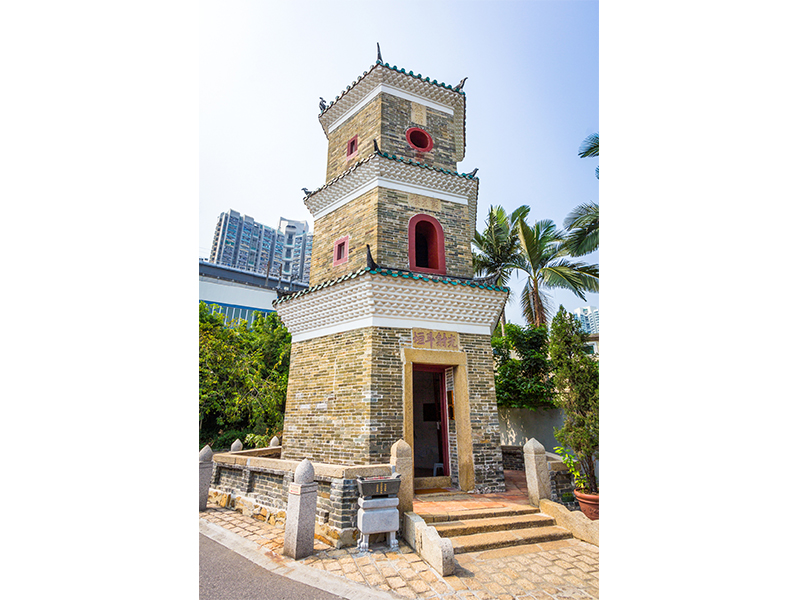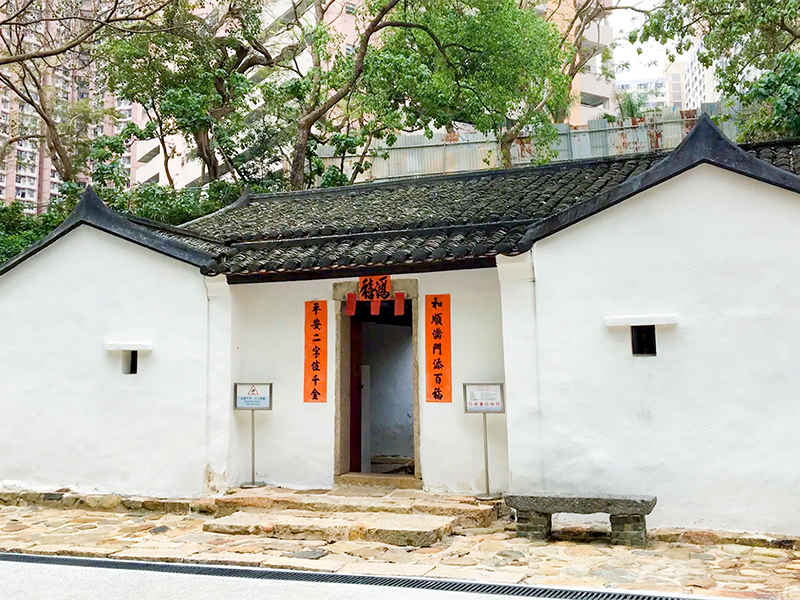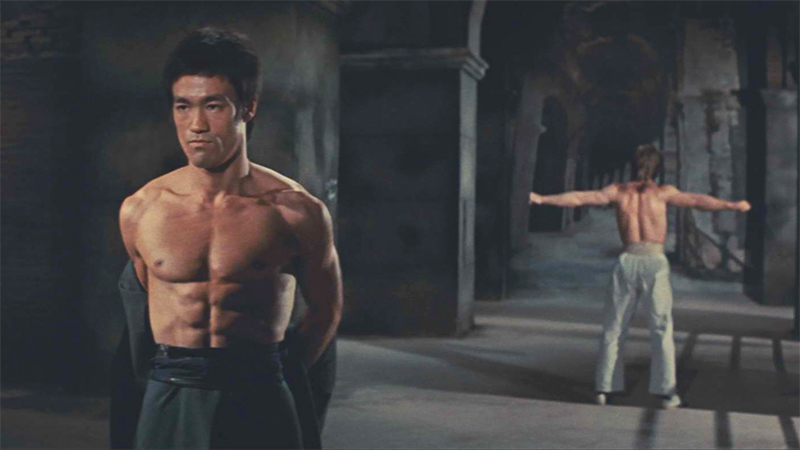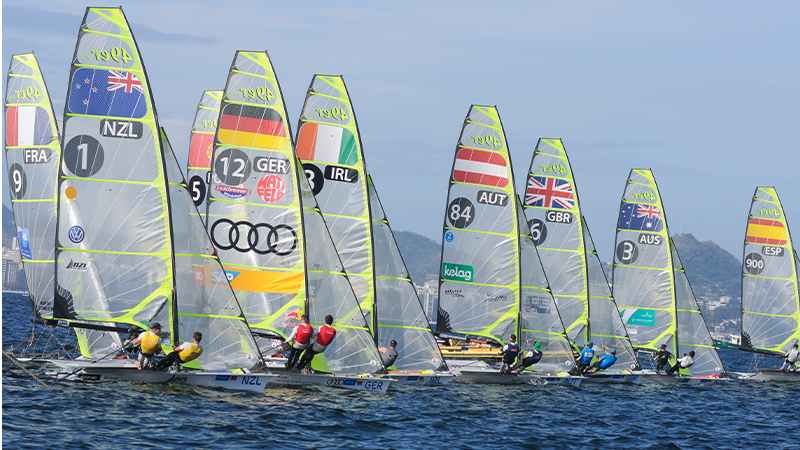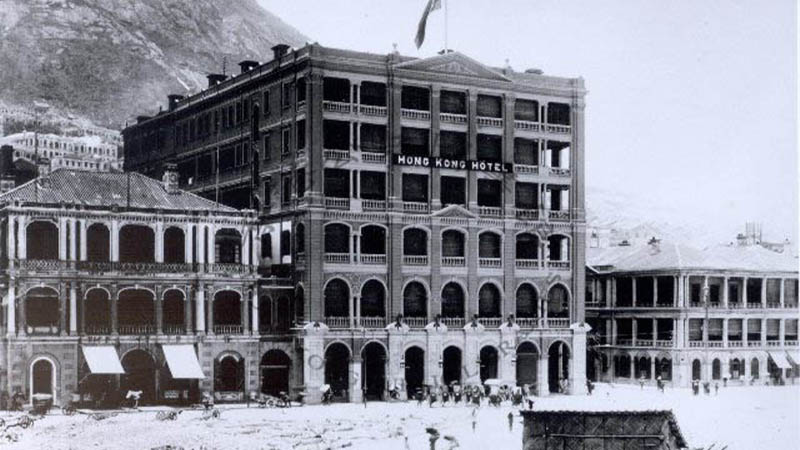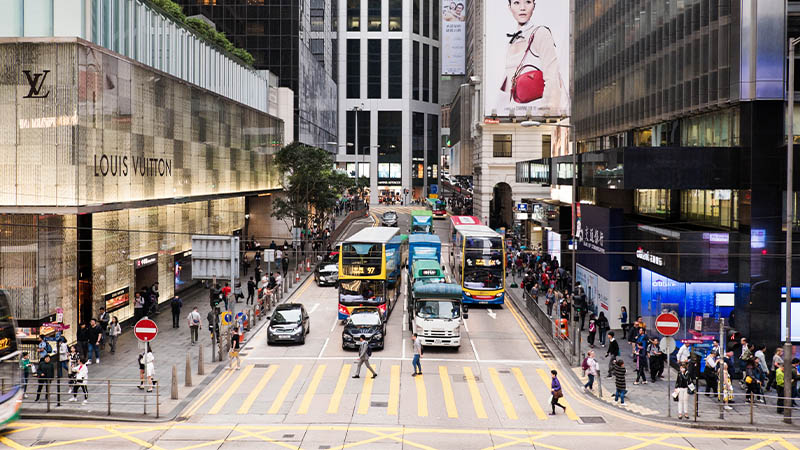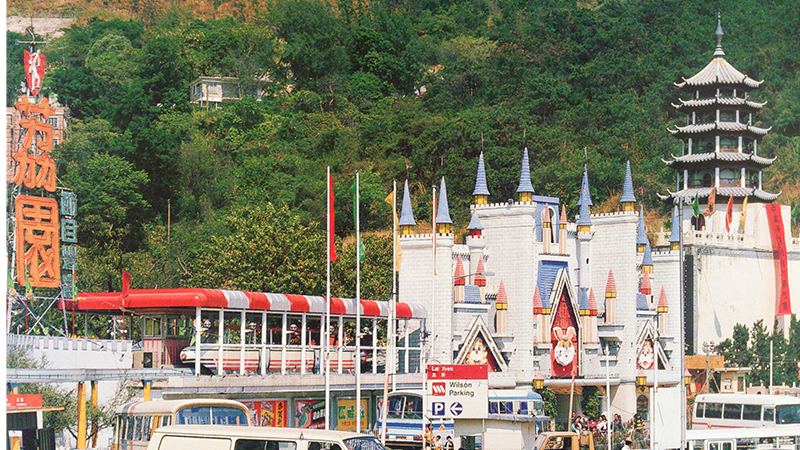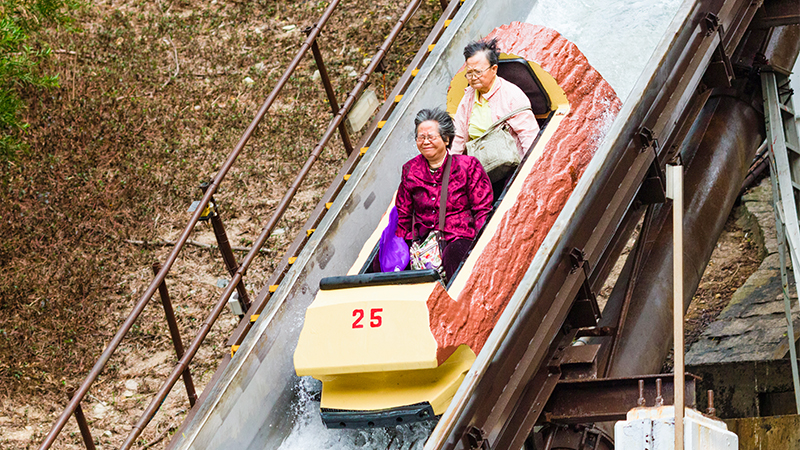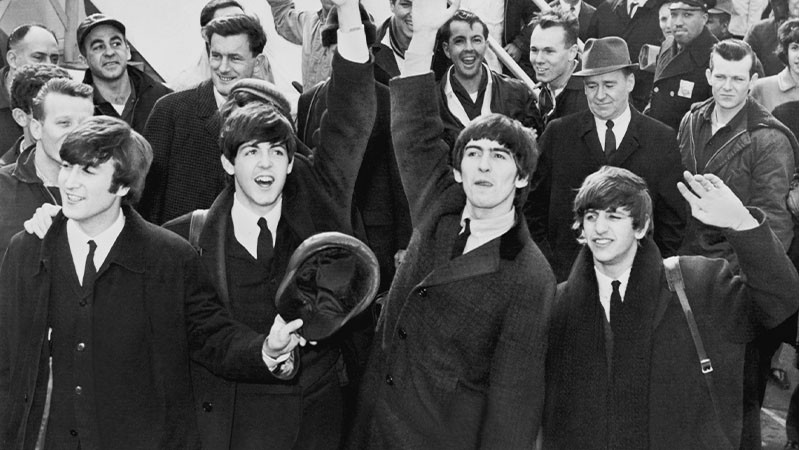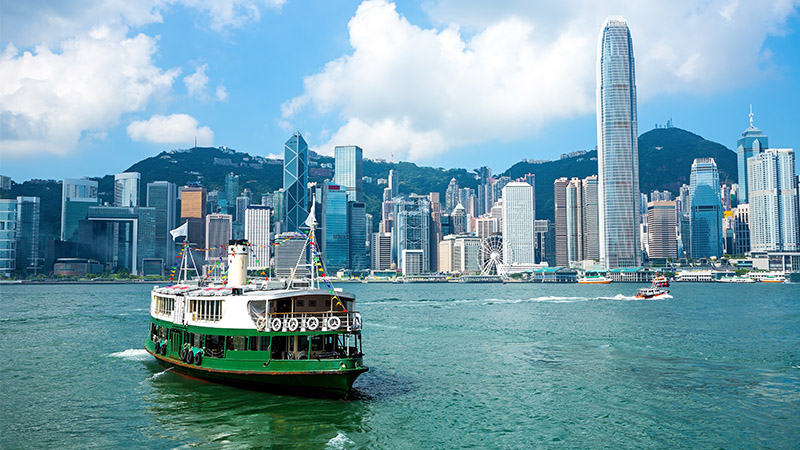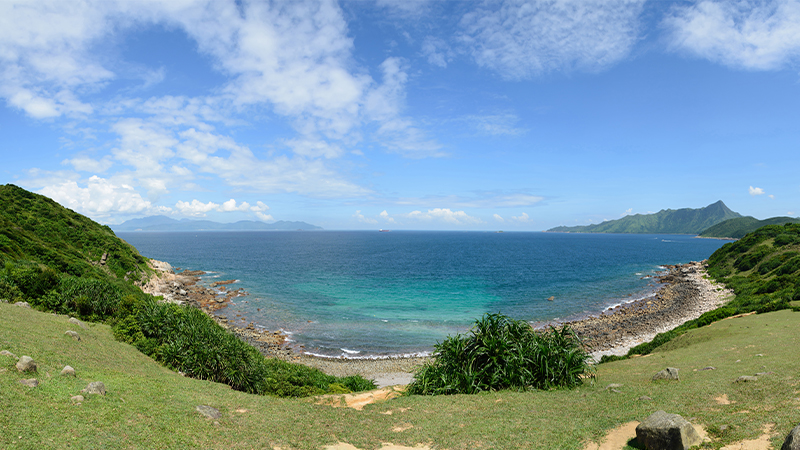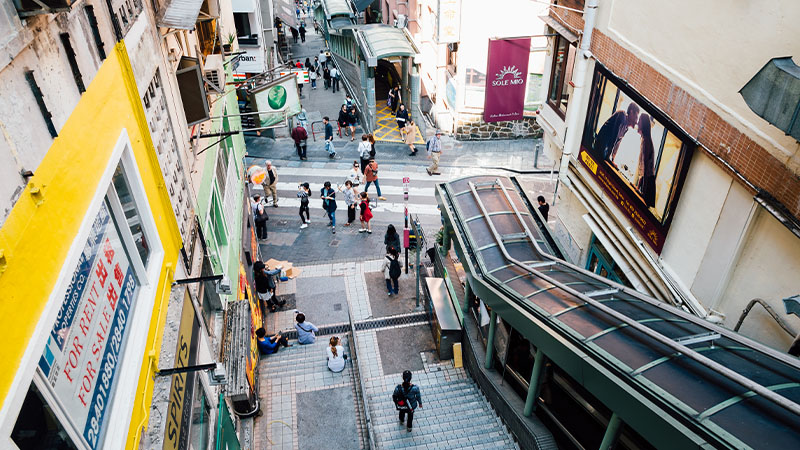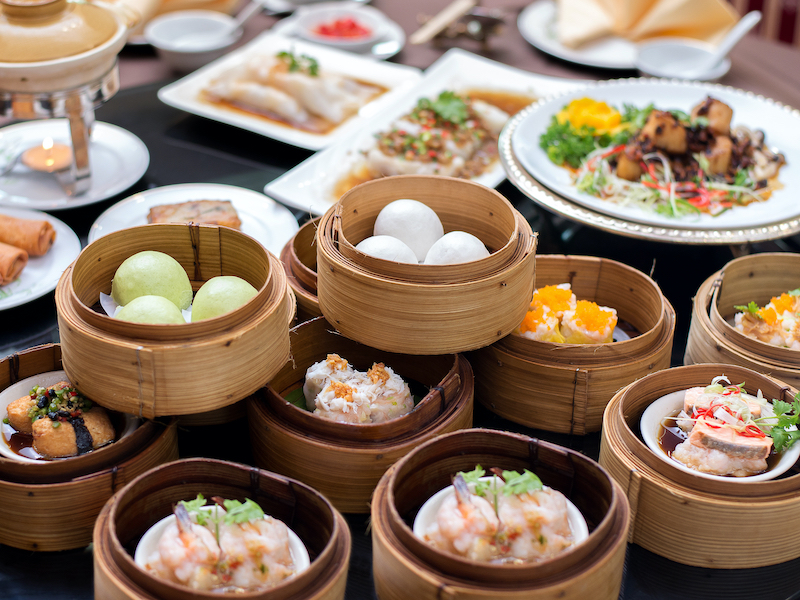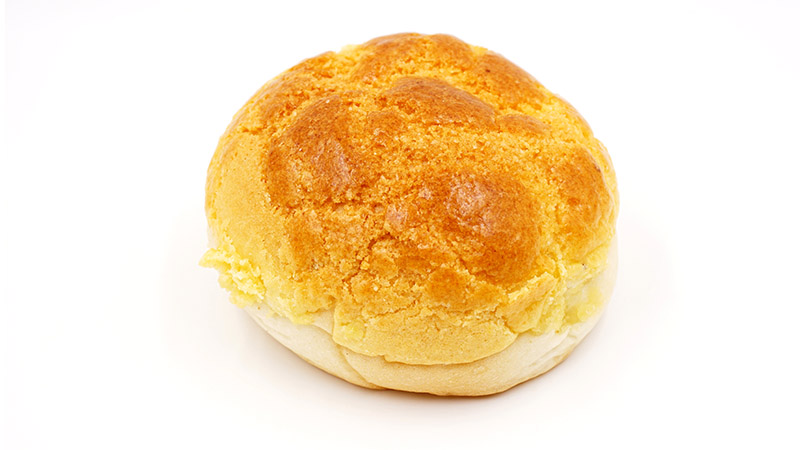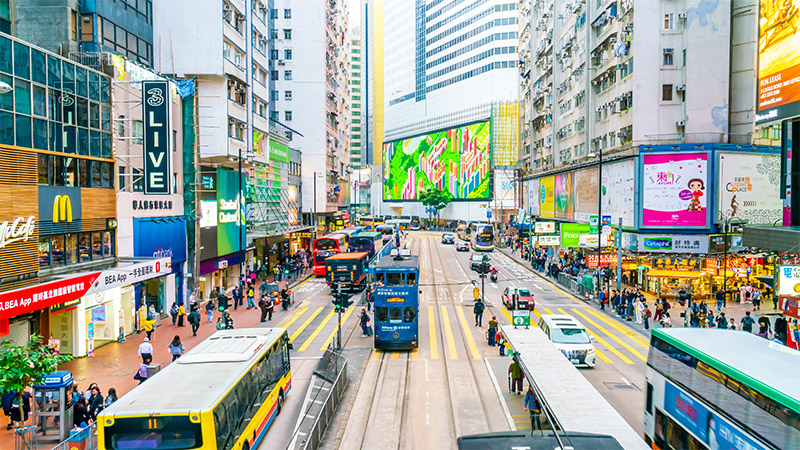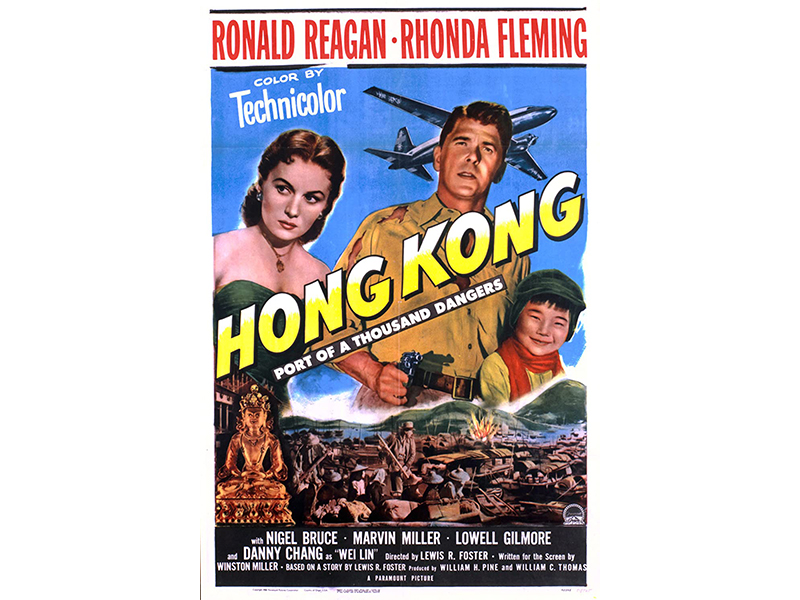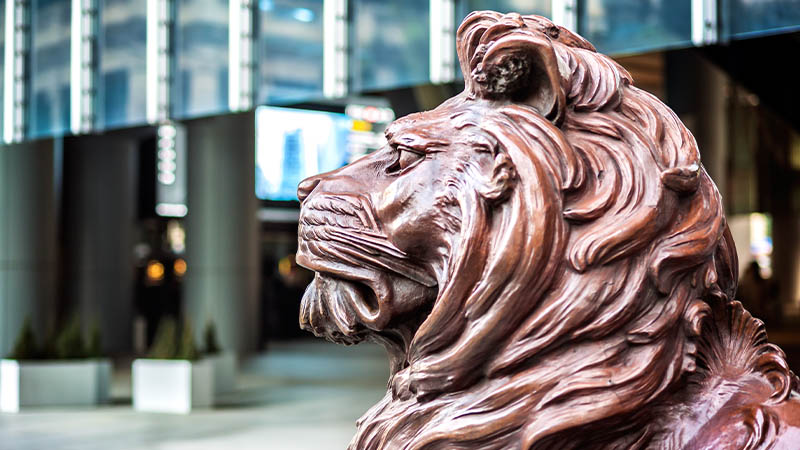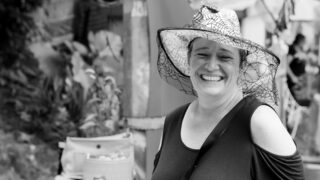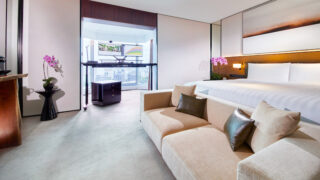In each issue of Expat Living magazine, our regular ‘Hong Kong Pages’ column explores HK’s past and present, with interesting facts, tips, trivia – and a bit of time travel! Read the latest instalments here – and check back every month or two for new updates.
Hong Kong’s Weather: 2023 in Review
We all know last year was a turbulent time for weather – but just how gnarly was it? The results are in from the Hong Kong Observatory!
Hottest summer: From June to August 2023, the mean temperature was 29.7 degrees Celsius – the hottest on record. The mean maximum was 32.4 and the minimum 27.6.
Hottest August: The sea surface temperature in parts of the South China Sea was particularly high mid-year – and the effects were felt here thanks to a southwesterly atmospheric flow. The result? The highest monthly mean temperature on record for August: 29.7 degrees.
September rainfall: Thanks to Super Typhoon Saolo and its associated rain event a week later, the Observatory’s rainfall figures for September – 1067.1 millimetres (over a metre of rain) – easily broke the existing monthly record. Saolo was the second most intense tropical cyclone in the South China Sea since 1950.
Rainstorm on 7-8 September: The highest hourly rainfall on record in Hong Kong (stretching back to 1884) occurred from 11pm to midnight on 7 September – 158.1mm. The 24-hour rainfall from 4pm on 7 September to 8 September measured approximately one quarter of HK’s normal annual total rainfall.
Severe Typhoon Koinu: More records tumbled when Koinu passed by on 8 and 9 October, including the highest ever daily rainfall for the month. On the back of the September deluge, HK suffered its wettest autumn on record.
And that’s just a sample of the records set in 2023 – see hko.gov.hk for the full picture.
HK’S Fifth Hiking Trail
If you’re a walking/running enthusiast who’s in the midst of tackling Hong Kong’s “Big Four” hiking trails (not all at once!), the good news is that there’s another 90 or so kilometres of trail for you to add on when you complete the Hong Kong Trail, Wilson Trail, Lantau Trail and MacLehose Trail. Here are five things to know about the Tinworth Trail!
#1 The trail is named in honour of Nic Tinworth, a running enthusiast in Hong Kong and a legend of the sport here; Nic helped enormously in the growth of the HK running community through social media and event organisation. He died in 2020 after battling a brain tumour.
#2 Known as the “unofficial 5th Trail”, the Tinworth Trail is 97.22km long, and involves a vertical gain of 4,828m. It’s divided into 10 sections.
#3 The starting point is Hong Kong’s northernmost town, Sha Tau Kok, on the border with mainland China, while the finishing point is all the way down in Tai O on Lantau.
#4 While you might expect plenty of crossover with the four established trails, in fact, only 4km of the Tinworth Trail includes sections of those main paths. Highlights along the way include Robin’s Nest, Tai To Yan, the Yuen-Tsuen Ancient Trail, Lo Fu Tau, Wong Lung Hang Valley and the Tung O Ancient Trail.
#5 Because it’s an unofficial route, the Tinworth Trail isn’t signposted. To get started, visit tinworthtrail.com and download the GPX coordinates file to your smartphone or watch – you can then follow the trail as you go, using an app such as Hiking Trail HK.
Super-sized Screen Time
Hong Kong is home to one of the largest media facades in the world – the M+ Façade. Measuring 65 by 110 metres, the giant screen faces Victoria Harbour and can be viewed from 1.5km away on Hong Kong Island. The light-powered canvas is made up of thousands of LEDs and, until 10pm each night, shows a range of visual features to entertain onlookers.
For the record, other hefty media facades around the world include the Sphere at The Venetian Resort in Las Vegas, and a 350m panel that wraps around a shopping centre in Jakarta.
On Now: Until 9 June, the M+ Façade is featuring a new film, Sparrow on the Sea (2024), by renowned Chinese artist and filmmaker Yang Fudong. With moving images of Hong Kong’s landscape, architecture and soundscape, the film will be shown every night on the big screen.
Wartime Stoves
Speaking of Hong Kong’s hiking trails, if you tackle the thigh-burning Section 2 of the Wilson Trail, you’ll pass by an interesting military relic on the way down to Quarry Bay – remnants of wartime stoves that were set up to help feed refugees who had fled to Hong Kong from Guangdong in 1938. This was a result of the so-called Canton Operation carried out by Japanese forces, aimed at blocking China from communication with the outside world during the Second Sino-Japanese War.
As many as 23 communal kitchens were proposed at 15 sites in and around the city, and employing 3,000 cooks and workers. The first of these kitchens operated out of Wan Chai, but the largest group of them was proposed for alongside the Taikoo streams in Quarry Bay, where 10 different sites were chosen for cooking facilities.
You can find the remains of the stoves along the Quarry Bay Tree Walk part of the Wilson Trail, near the end of Section 2 (a couple of hundred metres past Distance Post W017). The brick workbenches are well preserved, with dozens of large holes in which woks would sit. Two other locations nearby still have remnants of the kitchens, though one has only two original stoves standing, and the other is heavily covered with vegetation.
While the wartime stoves reflect a time of hardship for people in Hong Kong, their discontinued use from the same period does at least point to the post-war recovery and the end of food shortages.
Go Directly to Jail! Do Not Pass Go!
When we read the news recently that a second global instalment of the Monopoly Dreams theme park had opened in Melbourne, after the first one opened here in Hong Kong in 2019, it got us thinking about the different national versions of the board game that are available.
Monopoly was first released in 1935, and thirty years later the first Hong Kong version of the game came out. Since 1965, there have been multiple HK releases. Interestingly, there’s also been a huge change in the districts and streets used on the board. (And, in the 2000 edition, a silver Bauhinia token was added to the regular dog, cannon, horse and other tokens.)
For a glimpse at some of these changes, here’s a look at the different colour groupings of real estate from the 1991 edition and 2007 edition, from the “cheapest” grouping to the most expensive:
Brown:
1991: Wan Chai | Mong Kok
2007: Chek Lap Kok | Lantau Island
Light Blue:
1991: Sha Tin | Tseun Wan | Yuen Long
2007: Ngong Ping | Cheung Chau | Lamma Island
Magenta:
1991: Sai Kung | Lamma Island | Discovery Bay
2007: Lo Wu | Tin Shui Wa | Sham Tseng
Orange:
1991: Blue Pool Road | Wong Nai Chung Road | Village Road
2007: Kwai Chung | Sha Tin | Tseung Kwan O
Red:
1991: Chatham Road | Moby Road | Nathan Road
2007: Lei Yue Mun | Wong Tai Sin | Kowloon Tong
Yellow:
1991: Connaught Road | Queen’s Road Central | Des Voeux Road
2007: Kwun Tong | Mong Kok | Tsim Sha Tsui
Green:
1991: HKCEC | Pacific Place | Exchange Square
2007: Causeway Bay | Cyberport | Central
Dark Blue:
1991: Repulse Bay | The Peak
2007: Repulse Bay | The Peak
As you can see, only the ritziest dark blue properties remained the same across the two editions. And while it would probably be drawing a long bow to make any conclusions about Hong Kong real estate prices between 1990 and 2010 based on a Monopoly board, it’s at least interesting to see the new names that have come in and replaced some of the older ones.
In 2010, a “Hong Kong Attractions” edition of the game was released, replacing districts and streets and instead using tourist spots or must-see places in HK – it includes everything from Pedder Street and the Avenue of Stars, to Lion Rock and Lan Kwai Fong.
Monopoly has been translated into 47 languages and been launched in 114 countries, with nearly 300 million sets of the board game sold to date. Monopoly Dreams in the Peak Galleria (Shop 301) has another edition of the game available to buy in the gift shop – the Monopoly Dreams Hong Kong Special Edition. It’s $268 and also available in some ticket bundles. See monopolydreams.com for more.
History: 5 Things about the Noonday Gun
Every day of the year at midday a gun is fired in Causeway Bay, a ritual that has persisted for more than 150 years. But why?
#1 The gun was part of the private arsenal of Jardine Matheson, one of the very first Hong Kong trading companies (established 1832). The story goes that the gun would be ceremonially fired to mark the arrival or departure of the company head (the taipan).
#2 There are conflicting stories about why it then changed to become a noonday ritual: the most likely is that the British Navy took a liking to the gun-firing ritual and ordered the daily 12pm shot to keep the city’s clocks to the same time. An alternative story is that the ritual was a “punishment” ordered by the Navy because they felt that firing a gun should be reserved for a high-ranking government official and not a businessman.
#3 While the tradition is over a century old, the current gun is newer. The original was lost during the Japanese occupation in World War II. The British Royal Navy replaced it after the war, and the noonday tradition began again on 1 July 1947. However, the new six-pound gun was replaced a second time in 1961 with a three-pound gun because the bigger one was considered too loud!
#4 Today, the gun continues to be fired each day by a Jardines employee, however the experience can also be “booked” by a member of the public, who in return gives a decent chunk of money (around $30,000 as a minimum) to MINDSET, a mental health organisation funded by Jardines.
#5 The gun is mentioned in the famous ditty of Noël Coward, “Mad Dogs and Englishmen”: “In Hong Kong, they strike a gong, and fire off a noonday gun / To reprimand each inmate who’s in late.” Coward wrote the piece during his Asia travels of 1929 and 1930. He returned to Hong Kong in 1968 and fired the gun himself!
Happy Birthday to Hong Kong’s First Skyscraper
Speaking of the Jardines name, did you know that 2023 marks the 50th anniversary of Jardine House? When it was unveiled (as The Connaught Centre) in 1973, the 178.5-metre, 52-storey skyscraper at 1 Connaught Place was the tallest building not only in Hong Kong but in all of Asia. It was usurped as HK’s tallest by the Hopewell Centre in 1980. Today, it ranks as low as around 170th in the list of Hong Kong’s tallest buildings!
The building, which belongs to the Jardines’ subsidiary Hongkong Land Limited, also featured Asia’s fastest elevators when it opened. Produced by Otis, they reached speeds of over seven metres per second. Its distinctive round windows were another innovation that gained plenty of attention. Jardine House would later feature prominently in an NBC miniseries version of the James Clavell novel Noble House.
Reflections on Kai Tak
This year marks 25 years since Kai Tak International Airport (pictured) closed its doors in downtown Kowloon, and the shiny new Chek Lap Kok facility began operations. While the new airport’s Lantau location provides a clear approach for pilots, Kai Tak was known for a notorious final 45-degree turn that had to be made at very low altitude – and surrounded by high-rise buildings. One thing helping pilots was a distinctive checkerboard symbol, in huge red and white squares, located on a nearby hill, providing a visual aid for the turn.
Today, the old airport is home to the Kai Tak Cruise Terminal, with the adjacent Kwun Tong Promenade just across the water. Did you know? Kai Tak took its name from two businessmen, Ho Kai and Au Tak, who formed an investment company in 1912 to reclaim land in Kowloon for development.
Culture: Treading the Bamboo Boards
This year has seen the welcome return of a Hong Kong tradition that has been around since the late 19th century: the bamboo theatre. We’re all familiar with the bamboo scaffolding used on building sites in HK, with the incredible contrast between a centuries-old construction method, and the steel and glass used to make a modern skyscraper.
The same technique is used in the tradition of the bamboo theatre, which sees large-scale bamboo structures erected temporarily for festival celebrations for the deities Tin Hau and Zhen Jun – including Cantonese opera performances – in as many as 40 different villages around Hong Kong.
A well-known one is the Tsing Yi Bamboo Theatre, constructed annually on the Tsing Yi Athletic Association Soccer Pitch; it was built for a festival in early May this year, after a three-year hiatus. Just as we were going to press (late May), a similar theatre was going up at the Tin Hua Temple Complex in Sai Kung. The annual Sai Kung celebration has traditionally been postponed until the fourth lunar month for various reasons, hence the later date. Arguably the most atmospheric of Hong Kong’s bamboo theatres is the one built occasionally at Po Toi, which clings to a cliffside next to the ocean.
Building these theatres is an incredibly complex job, with apparently only two companies remaining in Hong Kong who have the expertise for the job and a “scaffolding master” to oversee the work. Not a single nail is used in constructing each theatre – and then, a few days later, the whole thing has to come down again!
Did you know?
The Cantonese opera performers who strut their stuff on these temporary stages are, like the construction workers, highly trained in a very specific craft. They must know the so-called “four skills” – that is, singing, acting/movement, speech delivery and martial/gymnastic skills – and “five methods”, which are techniques associated with particular body parts such as the hands, eyes and feet. Cantonese operas usually adopt one of two themes; mou (“martial arts” – stories are about generals or warriors) and man (“highly educated” – stories about scholars).
10 Things About Hong Kong’s Trams
#1 The origins of the city’s iconic trams can be traced back to the Tramways Bill of 1881. It called for the construction of a tramway along the north shore of Hong Kong Island that could be “moved by animal, steam or any mechanical power, for the carriage of passengers and their belongings, whether luggage, goods or passengers’ animals.”
#2 The tram system in HK is the only one in the world that exclusively uses double-decker cars. However, when Hong Kong Tramways launched the first fleet of 26 trams in 1904, they were all single deck. The first doubledeckers appeared in 1912.
#3 The first tram route 119 years ago ran from Kennedy Town to Causeway Bay. Today, the western terminus is still Kennedy Town, but the length of the tram system has almost doubled, with its eastern terminus now at Shau Kei Wan.
#4 A third-class ticket in 1904 cost five cents. There are no different classes today, and an adult ticket costs $3, regardless of the distance you travel.
#5 Women were hired as tram conductors and drivers for the first time in 1971. In 1976, conductors were replaced by coin boxes. In 2020, HK-based Italian designer Andrea Ponti revealed a prototype of a driverless double-decker tram, perhaps pointing the way to a fully automated system in the future.
#6 Different routes that have been proposed over time but ultimately rejected include in Kowloon (1910s), Chai Wan (1970s), Tuen Mun (1980s) and Kai Tak (2010s).
#7 Tram drivers back in the day weren’t given formal lunch breaks, so they had to eat at any opportunity while on the job – including while stopped in traffic. This led to the phrase “red light meals” (紅燈飯).
#8 On a normal day of operations, around 130,000 people ride the trams. This figure is significantly lower than it once was, one reason being the opening of the extended Island Line of the MTR.
#9 The trams are affectionately known as “ding dings” after the sound of the double-note bell that warns pedestrians of their approach. The bells were temporarily replaced with beepers in 2000, but reinstalled after a public outcry.
#10 Today, there are 165 tramcars in operation, including two antique trams (number 28 – “Albert” – and number 128 – “Victoria”) and a sightseeing tram (number 68 – “TramOramic”). Hong Kong’s trams are the only on-land vehicles in the city that emit zero roadside emissions.
Streets: Name Games
Speaking of Hong Kong’s trams, did you know they travel along a total of 14 streets on HK Island? One of those 14 is Kennedy Town Praya.
The word “Praya” in that street name comes from the Portuguese praia, meaning “beach”. In Hong Kong, “praya” became the term used for any waterfront road reinforced by a stone wall. In Chinese treaty ports, on the other hand, the Hindustani word “bund” was more commonly used – most famously in Shanghai. One possible reason for Hong Kong sticking with the Portuguese terminology is because of its proximity to Macau.
Today, at least half a dozen waterfront roads still have Praya in their name, including Aberdeen Praya Road and Ap Lei Chau Praya Road.
Other interesting quirks of HK street names
• Hiram’s Highway is named after a brand of tinned sausages! The main road into Sai Kung comes from the nickname of Major John Wynne-Potts of the Royal Marines, who shared the same name as American sausage brand Hiram K. Potts.
• Minden Row comes from the HMS Minden, a Royal Navy ship named after a successful British battle fought near the German town of Minden. Despite this, the Chinese name for the street is “Myanmar Row”. This is thought to stem from a simple translation error.
• Speaking of errors, the reason for Rednaxela Terrace having a backwards name is usually put down to a scribe who was accustomed to reading Chinese from right to left, rather than the left to right of English.
• High Street in Sai Ying Pun was once called Fourth Street. The name was changed for the same reason you won’t find the fourth floor in many HK elevators: because “four” sounds similar to the word for “death”.
Drinks: Make mine a double!
Are you a tea or coffee person? Some people in HK are both – no, not coffee in the morning and tea in the afternoon, but together in the same cup! Yuen yeung is exactly that: a tea-coffee combination served at dai pai dongs and in cha chaan tengs in HK. Featuring a mix of around two-thirds tea and one-third coffee, it’s served hot or cold, with sugar and milk. The name derives from the Cantonese word for Mandarin ducks, and it’s a fitting one, as the birds symbolise a love pairing in Chinese culture.
If you love the idea of a pair of hot beverages mixed together as one, order a yuen yeung on your next local food adventure.
Did you know?
Opened in the early 1950s, Lan Fong Yuen is a classic cha chaan teng in Central (2 Gage Street) that claims to have invented not only silk-stocking milk tea but also yuen yeung.
Make mine a black cow!
If you’re keen to try something other than milk tea on your next trip to a cha chaan teng, why not order a Black Cow (黑牛)? Or, if you have kids, get one for them – they’ll love it! The beverage consists of a cup of cold Coca-Cola with a scoop of either chocolate or Rocky Road ice cream floating on top. This local version of an “ice cream float” or “spider” has some interesting variations, too, including a White Cow (vanilla ice cream and Sprite), Red Cow (strawberry ice cream and Ribena) and Yellow Cow (mango ice cream and cream soda).
Other weird and wonderful drink combos available at cha chaan tengs include:
- Hot Coke with lemon and ginger
- Cream soda with milk
- 7-Up with salted lime
Exploring Hong Kong
Seaside cycling
Another extension to the 60km New Territories Cycle Track Network has just opened in Tai Po. The Sam Mun Tsai waterfront cycle track adds a stunning extra kilometre to the network, offering great views of Plover Cove and the Shuen Wan Typhoon Shelter. The new track has a resting station at the end, where you can park your bike before walking across to Ma Shi Chau, an island with a 1.5km nature trail with striking geological features. For maps and info about the whole New Territories cycling network, see ntctn.hk/en.
Bird’s eye view
Next time you get off the Star Ferry on the TST side, talk a walk to the left along the shoreline beside Harbour City and you’ll find yourself joined by a flock of seagulls.
Not just any seagulls, though! From the middle of May, a total of 62 life-sized seagull sculptures have been in place along this part of Victoria Harbour. They’re part of a public art installation by renowned Japanese artist Takahito Kimura, who is showing his Kazamidori (“weathercock”) series outside of Japan for the first time. The seagulls spin freely in unison with the sea breeze, bringing a touch of nature to a busy part of the city. They’ll be there until 30 June.
Two new bridges
Are you a gephyrophiliac*? Then you’ll be happy to hear about Hong Kong’s latest completed construction projects.
#1 Cross Bay Link
The Cross Bay Link opened on 11 December 2022. The bridge over Junk Bay is a game-changer for many who travel to HK Island for work, while also providing some nice new leisure options in the vicinity.
Cross Bay Link (pictured here while still under construction) is the first marine viaduct in Hong Kong to consist of carriageways, a cycle track and a footway. Aside from shortening journey times and helping to divert traffic from busy routes, it will also connect to the cycle track along the Tseung Kwan O waterfront to form a 5km coastal cycling track loop.
The bridge is only one-half of the project, too. It’s accompanied by the new Tseung Kwan O-Lam Tim Tunnel, a 3.8km route that serves as an alternative to the existing Tseung Kwan O Tunnel. It connects the Cross Bay Link with the Eastern Harbour Crossing across to HK Island.
#2 Sky Bridge
The world’s longest airside bridge has opened at HKIA. The 200m-long, 28m-high footbridge goes straight over one of the taxiways at the airport, connecting Terminal 1 with the T1 Satellite Concourse (T1S) via an automated walkway. Bye bye, shuttle bus!
Sky Bridge, as it’s known, is big enough for the largest passenger aircraft, the A380, to pass straight under. You’ll know when an A380 is passing straight under, too, because the new structure has a glass floor. So, along with a full panorama out across the airport to the hills of Lantau, you also get to check out the action on the tarmac below your feet.
The bridge will constitute the highest point in the airport for passengers, and will eventually include an observation deck, a shop, and an outlet for hungry and thirsty travellers. Bring a camera and an Insta account …
More Hong Kong Facts
Architecture: Story of a skyscraper
Until a couple of new upstarts took its place, Central Plaza in Wan Chai ruled the HK skyline. Here are five things you mightn’t know about it!
#1 It’s Hong Kong’s third-tallest building, at 373 metres (behind only ICC and Two IFC). When completed in 1992, it was the tallest building in all of Asia. And, for the first five years of its life, it was the tallest concrete building in the world (most skyscrapers at the time were built from steel).
#2 Having said that, the highest floor is actually less than 300 metres, as the top quarter of Central Plaza consists of a thin 100-metre-tall mast. It’s this mast that gives the building a distinctive shape (and its nickname, “The Big Syringe”!).
#3 Contestants in the American reality TV show The Amazing Race 2 visited the building in the seventh leg of their competition. (While in HK, they also went to the Big Buddha, rowed a dragon boat and had their fortunes told.)
#4 The 46th floor is home to a Sky Lobby, which is open to the public (and free!), with stunning views over the harbour and to the Peak. On the 75th floor of the building is Sky City Church – the world’s tallest church within a skyscraper.
#5 Embedded in the top floors of Central Plaza is a high-tech clock made up of four neon bands that change colour every 15 minutes. At 11pm, for example, all four neon bands glow green. Then one band turns red every quarter of an hour, until all four bands are glowing red at midnight. (You can see the colour scheme of the different times at centralplaza.com.hk/eng/lightime.php.)
Ancient Structures
Yes, Hong Kong is dominated by shiny modern skyscrapers like Central Plaza, but lurking here and there are some very old buildings. The following are a few of the oldest!
LEI CHENG UK HAN TOMB
Approximate age: 2,000 years
In 1955, land was being levelled on a hill not far from today’s Cheung Sha Wan MTR station, when workmen unexpectedly stumbled on a Han Dynasty tomb.
The tomb was excavated by a team from Hong Kong University; no skeletal remains were found, but inscriptions on the pottery and bronze ware (which included a basin, mirror, bell and bowl) dated the find to the Eastern Han Dynasty (AD 25-220).
Built of bricks, the tomb has four chambers and an entranceway, with ancient messages inscribed in the bricks that read “Great fortune to Panyu County!” and “Peace to Panyu County!”
The tomb was open to the public from 1957 to the mid-1980s, when access was restricted and the site declared a gazetted monument. Today, you can view the tomb through a glass panel – the interior is sealed in a controlled atmosphere. You can, however, see videos, models, maps and photos at the Lei Cheng Uk Han Tomb Museum next door.
The Han tomb is the oldest known structure in Hong Kong.
TSUI SING LAU PAGODA
Approximate age: 650 years
Hong Kong’s only surviving ancient pagoda, Tsui Sing Lau is close to Tin Shui Wai MTR station (exit E3) in Ping Shan. The threestorey hexagonal pagoda is made of mud bricks and granite and dates to the Ming Dynasty (1368- 1644); historians believe it used to be seven stories tall.
Walk along the Ping Shan Heritage Trail (1.6km) and you’ll also come across the 700-year-old Tang Ancestral Hall, whose timbers are carved with auspicious motifs, as well as some centuries-old study halls, where budding officials took public examinations.
LAW UK FOLK MUSEUM
Approximate age: 270 years
Rediscovered in Chai Wan in the mid 1970s – when it was in a derelict state and full of flammable goods from being used as a furniture workshop – today’s Law Uk Folk Museum is an old Hakka village house consisting of five rooms; it was built in the mid-18th century. Part of the house was destroyed by a bomb during the Battle of Hong Kong in 1941. You can visit the museum in person, or take a great virtual tour of the building at bit.ly/3wKEYuy\
Cinema: A Hong Kong Kung Fu classic
2022 marked the half-century anniversary of the release of The Way of the Dragon (1 June 1972). Here are 10 things you mightn’t know about the Bruce Lee film.
#1 It was made for US$130,000 and reaped $130 million at the box office, so it earnt a thousand times its budget!
#2 It was released in the US with a slightly different title: Return of the Dragon.
#3 Lee’s character Tang Lung is a “country bumpkin” from Hong Kong who finds himself in Rome, protecting a Chinese restaurant from the Mafia.
#4 The film’s climactic fight scene is set in the Colosseum in Rome, though the actual fight was filmed in the studio in Hong Kong.
#5 Bruce Lee’s adversary in the fight is none other than Chuck Norris.
#6 The film is often described as Norris’ debut performance; in fact, he had a cameo in a 1968 Dean Martin film.
#7 Lee not only played the lead in the film; he produced and directed it, wrote the script, choreographed the fights and, apparently, played percussion on the soundtrack!
#8 The film is said to have helped popularise a fight move called the “oblique kick”, today used by MMA fighters, including American Jon Jones.
#9 One notable quote from the film sees Bruce Lee’s character being asked what he thinks of Rome’s ancient relics; he replies, “It’s a waste, all of this. In Hong Kong, I would build on it. Make money!”
#10 Despite still getting decent reviews in the Bruce Lee canon to this day, the film is criticised for its terrible, sometimes comical, dubbing.
Sport: Medal Moments
At the 2021 Tokyo Olympic Games, Hong Kong came away with its best medal haul of any Games. Congrats to the whole team! Here are some updated stats on HK’s performance across all Olympics.
- Number of Olympic Games appearances: 17 (1952- 2020)
- Smallest team: 2 athletes, Melbourne 1956
- Biggest team: 47 athletes, Los Angeles 1984 (there were 46 at Tokyo)
- First medal of any colour: Gold, Atlanta 1996
- First gold medallist: Lee Lai-Shan (windsurfing)
- Number of Olympics with no medals: 13
- Most recent Olympics with no medals: Rio 2016
- Best medal haul: 6, Tokyo 2020 (1 gold, 2 silver, 3 bronze)
- Total medal haul across 68 years: 9 (2 gold, 3 silver, 4 bronze)
- Best of luck to Hong Kong’s athletes competing in the 2020 Summer Paralympics as this issue goes to press!
Flashback! A famous hotel closes
In 1952, the final paying customer checked out of the 84-year-old Hong Kong Hotel, which had opened back in 1868. For history buffs, here’s a quick look at its story.
By the 1860s, Hong Kong’s hotel scene was floundering. That’s according to the three British authors of an 1867 book, The Treaty Ports of China and Japan (described as a “guide for travellers, merchants and residents in general”). Here’s what they had to say:
The hotel accommodation in Hong Kong is not equal to the requirements of the place. The best establishment is the Hotel d’Europe, situated in the Hollywood Road, but this is frequently overcrowded on the arrival of the mail steamers from Europe or the North. Besides this are two or three others availed of chiefly by single men, of which the Stag Hotel, the Argus, and the British Hotel are the most respectable.
At the time of writing, the Oriental Hotel is still in existence, but as its site has been purchased by the recently established Hongkong Hotel company, it will soon be closed. This new company is set to supply the great want in Hong Kong of a building suitable for passing travellers and permanent lodgers.
The ordinary tariff at the better hotels now existing is three dollars per day per individual for boarding and lodging (exclusive of wines), children being the subjects of special agreement.
Just a year later, in 1868, the exciting new hotel mentioned by the authors opened its doors, on Queen’s Road and Pedder Street (where today’s Central Building can be found). This was a big deal – “the greatest enterprise of the kind in China and Japan”, according to the media. And the hotel’s first manager, Charles Duggan, had previously worked at The Langham in London.
Not all were impressed. Here’s a lukewarm early review from Scottish traveller John Thomson, from Illustrations of China and Its People (1873-1874): “The Hongkong Hotel, constructed after the model of large hotels in London, has not proved to the shareholders a very profitable undertaking, being on a scale too vast for the requirements of the place.” Despite this, Thomson found the management “good” and the hotel “comfortable”, even if he did struggle to understand the waiters in the restaurant!
The hotel expanded in the 1880s, with a six-storey north wing extension right on the water. Passengers arriving on P&O mail steamers would be collected from the pier and taken directly to the hotel. In 1904, the building was converted to electric lighting. In 1920, the hotel’s owners launched a new property, The Repulse Bay Hotel, opened by the Governor at the time, Sir Edward Stubbs.
On New Year’s Day in 1926, the hotel’s newer north wing burnt down; it was replaced by Gloucester Tower in 1932 (redeveloped in the early 1980s as The Landmark). Following the Second World War, the Hongkong Hotel became less commercially viable, and it closed in 1952.
It wasn’t the end for the owners, though. Today, that company – now known as Hongkong and Shanghai Hotels, Limited – owns The Peninsula Hong Kong.
A Theme Park Of Yesteryear
Lai Chi Kok Amusement Park (pictured) opened in April 1949 near Lai Chi Kok Bay (the name means “lychee corner”) on the west side of Kowloon. It was Hong Kong’s biggest park of its kind, remaining so for decades. Highlights included:
- thrill rides called “Dragon Coaster”, “Space Car”, “Sky Merry” and “Astro Swinger”;
- fun-house experiences called “Surprising House”, “Haunted Mansion” and “Grandish House”;
- a carousel, Ferris wheel, shooting gallery and bumper cars;
- a monorail for touring the whole park;
- knife-throwing exhibitions and an ice-skating rink (winter only!); and,
- a zoo with everything from a Bactrian camel to a German goat, plus star attraction Tino the Asian elephant.
Tickets to get in were originally 60 cents, rising to around $15 by the time the park closed in 1997.
In 2015, a son of one of the owners of Lai Chi Kok launched a “pop-up” version of the old amusement park in Central, hoping to evoke some happy nostalgic vibes. Called “Lai Yuen Super Summer”, it featured a handful of rides and attractions, and a robot version of Tino the elephant! Reviews were mixed.
Hong Kong had earlier amusement parks than Lai Chi Kok. The first was perhaps Yue Yuen, or “Happy Retreat”, at the south end of the Happy Valley racecourse. It opened in the 1890s and was still operational into the 1920s. One source mentions that it had a Ferris Wheel, swings, a shooting gallery, fireworks and live music.
There was also a Luna Park in HK, like in many other places around the world; it opened the same year as Lai Chi Kok, but shut just five years later, in 1954.
The Big Gig
Here’s a look back at one of the highest profile concerts the city has witnessed – 59 years ago, when the Beatles visited during their world tour of 1964.
Date: June 1964. Most reports say that the band played on 9 June, but there are collectors’ ticket stubs that clearly say 10 June. Whichever night it was, the band played two shows (the late show started at 9.30pm), to a crowd of around 1,700 people each time.
Venue: Princess Theatre on Nathan Road. The theatre was demolished in the 1970s and is the current location of The Mira hotel.
Cost: Up to $70 per ticket.
Set list: While there’s no official record of the set list, the band’s recent big hits are all likely to have featured – “I Want to Hold Your Hand”, “I Saw Her Standing There”, “All My Loving” and “She Loves You” – along with popular covers like “Roll Over Beethoven” and “Twist and Shout”.
Story of the gig:
- It wasn’t so much the Fab Four as the Fab Three plus one. Ringo Starr was in a hospital in London recovering from tonsillitis. He would also miss the first show (in Adelaide) of the subsequent Australia tour.
- Neither of the Hong Kong shows was sold out because the ticket price was too expensive for the band’s main fan base – teenagers. It’s said to be the only concert in the band’s history where the promoter lost money! Military serviceman made up a big proportion of the crowd; Paul McCartney would later recall that it was mostly a “khaki audience”.
- Despite this report, some fans who attended recall the concert as having the typical throngs of screaming fans – to the point where the music was mostly drowned out.
- The Beatles’ Hong Kong tour is said to have prompted a demand for more rock and roll records and shows, with the likes of The Carpenters and Herman’s Hermits also touring in the 1960s. The Rolling Stones dragged the chain: they didn’t play in HK until 2003
Founding a Ferry
The name Dorabjee Naorojee Mithaiwala may not roll off the tongue, but it’s an important one in the history of one of Hong Kong’s iconic companies. Dorabjee was an Indian parsee who arrived here in 1852 as a stowaway on a ship travelling from Bombay to China.From those humble origins, he went on to become a hotel entrepreneur, founding the King Edward Hotel and perhaps as many as three other properties in Hong Kong.
In 1880, Dorabjee launched a ferry service across Victoria Harbour with a steamboat called the Morning Star – the “star” in the name stemmed from the symbol of his Zoroastrian religion. The trip between Pedder’s Wharf and Tsim Sha Tsui took between 40 minutes and an hour. By 1890, there were four ferries making the journey. Over the next ten years, British-Indian businessman Sir Catchick Paul Chater bought all the boats from Dorabjee, and in May 1898 the Star Ferry became a public company.
Today, around 26 million people each year ride on Hong Kong’s iconic green-and-white Star Ferry. The fleet’s nine boats ply the eight minute route from Central to TST and back again all day, with passengers paying just a couple of HK dollars or so for the privilege.
5 Things To Know About Tap Mun
If you haven’t done an island day trip to Tap Mun, off the northeast coast of Sai Kung, it’s worth the effort for a mix of scenery, exercise, culture and food.
#1
The name Tap Mun means “stupa door”; this probably comes from the island’s step-like rock formations and caves, which resemble a temple entrance. The best-known formation is Balance Rock, two huge cubes of stone sitting on top of each other in a way that resembles the Chinese character lui: 呂. You can find Balance Rock on the shoreline on the southeast corner of Tap Mun.
#2
You’ll also hear Tap Mun called “Grass Island” – for obvious reasons. There are plenty of meadowy fields to be found, but the best is located a short walk from the pier to the eastern side of the island. A pavilion at the top is a popular spot for a picnic. (The lack of trees is said to provide a year-round breeze, but EL’s last visit was on a sweltering July day and there wasn’t a single knot of wind!)
#3
You won’t be strolling the green hillocks alone if you come. There’s a decent-sized population of resident cows who’ll wander up to visitors sitting at tables and under shelters to have a sniff for food. They’re arguably Hong Kong’s most brazen herd – so keep an eye on your picnic hamper.
#4
The Tin Hau temple at Tap Mun is worth a look; in fact, it’s a cluster of three temples, around 300 years old. (A bronze bell in one of them dates back to 1737.) According to a local legend, a pirate’s tunnel once ran from the temple to a spot near Balance Rock. Keep an eye out for the pretty sculptures on the temple roof.
#5
There used to be a school here – it was behind the temple, higher up the hill. King Lam School opened in the middle of the 20th century, but now lies in ruins. (We’ve not poked our head in, but apparently you can.) The reason for its closure in 2003? We’re guessing low student numbers, as there was only a single 12-year-old girl enrolled at the time!
Aside from those features and points of note, the best thing to do on Tap Mun is to wander around the fishing villages – there’s one at the pier and another to the south – and then follow paths to different panoramic spots. The main village has a couple of restaurant options (try Sun Yau Kee – and, yes, choose the seafood dishes!).
Oh, and if you enjoy a rustic religious festival, there’s one held here every 10 years, when a flotilla of boats carries statues of Tin Hau to the island of Kat O. But you’ll need to wait until 2029 for the next one – sorry…
Getting There: Take the 94 or 96R bus from Sai Kung to Wong Shek Pier (96R is weekends only), then a kaito from the pier to Tap Mun. Each leg of the trip from Sai Kung (bus and boat) takes around half an hour.
Go Figure!
The Escalator in Numbers
We’ve all been on it – some of us use it every day; Hong Kong’s Central-Mid Levels Escalator is, according to the folks at Guinness World Records, the longest outdoor covered escalator system on the planet. Here are some other stats we uncovered about this unique walkway.
1993 – The year the escalator opened 800 Its approximate length, in metres
135 – The change in elevation, in metres, from top to bottom
782 – The number of steps you have to climb if you choose to walk beside the escalator instead of using it
75 – Approximate number of CCTV cameras on the escalator
6 – The number of days of filming that took place on the escalator in 1997 for the Batman film The Dark Knight (starring Christian Bale and Heath Ledger)
21 – The number of different sections to the escalator
78,000 – Approximate daily usage (number of people) of the escalator in 2016
240 mill. – The cost to build the escalator – $140 million over budget
20 – The travel time from top to bottom, in minutes, if you don’t do any extra walking on the escalator sections themselves
Also… In its early years of operation, the escalator was considered a “white elephant”, as it didn’t seem to achieve the desired effect of alleviating the traffic problems in the area. Since then, however, its usage has grown to three times the original estimates, and it has helped to revitalise much of the urban area it passes through. The escalator is currently undergoing a major four-year renovation, which is expected to be finished by 2022.
Food Focus
Five favourites
The Hong Kong Tourism Board (HKTB) has just finished compiling lists of the best experiences for visitors based on recommendations provided by locals. The “Hello Hong Kong – My Best Picks” campaign saw members of the public select their favourite Hong Kong experiences across a number of different categories. Of course, our eye was immediately drawn to the food…
These were the top five “Foodie Pleasures” chosen by Hongkongers for visitors to enjoy:
#1 Dim Sum
#2 Hong Kong-style Milk Tea
#3 Egg Tart
#4 Egg Waffle/Bubble Waffle
#5 Wonton Noodles
Hard to complain with that line-up, though we’d probably have snuck char siu onto the list. Mind you, we’d sneak sticky glazed barbecued pork onto any list.
There were also lists for the best city checkpoint and the best urban oasis, with the HKTB giving prizes away to a thousand members of the public whose personal picks most closely resembled the final lists.
5 things you mightn’t know about pineapple buns…
A pineapple bun (or bo lo bao) consists of a soft sweet bun topped with a harder crumbly cookie style crust made of sugar, eggs, flour and lard. When cooked, this crust on top cracks open, giving the bun a pineapple-like appearance on top. That’s where it gets its name – there’s no actual pineapple in the ingredient list. We’re sure you knew that fact. But here are a few other things about this delicious bakery snack that you mightn’t know!
- “Pineapple Bun” was once nominated as a typhoon name but rejected on the grounds that it would sound silly in otherwise serious news reports of the storm.
- The famous snack appeared in animated form in the 2004 film McDull, The Prince of the Pineapple Bun with Butter.
- In 2014, the pineapple bun made it onto the government’s list of 480 “items of living cultural heritage” (along with entries such as fire dragon dances, kung fu and the making of snake wine).
- A Japanese variety of the pineapple bun is the “melonpan”, whose top resembles a rockmelon or cantaloupe.
- Among the famous places to buy the buns in Hong Kong is Tai Tung Bakery in Yuen Long, which has made around 1,000 of them daily for well over 70 years.
Fact file
Sold-out Sunglasses
The 1986 John Woo blockbuster, A Better Tomorrow, starring Chow Yun-fat and Leslie Chung, broke the Hong Kong box-office records of the day and influenced local cinema for years to come. It also influenced lots of young (mostly male) Hong Kong moviegoers, who were so enthralled by the Chow Yun-fat character, Mark, that they tried to replicate his look by wearing long “duster” coats and black Alain Delon sunglasses. In fact, Hong Kong stores are said to have completely sold out of that brand of sunglasses within a week of the movie premiere.
Hong Kong Trivia
On the road again
There are more than 860,000 registered vehicles in Hong Kong, which makes for an incredibly busy network of highways, streets and lanes – many of which have an interesting backstory. Here’s our look at 10 pieces of road-related trivia in HK.
#1
The longest road in Hong Kong is Castle Peak Road – which, incidentally, celebrates its 100th birthday in 2020. The 51.5km road runs from Kowloon all the way to near the top of the New Territories.
#2
And the shortest? Well, there are some tiny lanes that aren’t navigable by car (one example is Wa On Lane off Aberdeen Street), but the shortest street that vehicles can use is Lok Kwai Path in Shatin. It’s 12 metres in length.
#3
Tsat Tsz Mui Road in North Point has a tragic background to its name. It means “seven sisters” and refers to a tale of seven Hakka girls who lived in the original village at this spot. When young, they pledged to remain sisters for life, and to die on the same day without getting married. After the girls’ parents arranged a marriage for one of them, they committed suicide together on the beach the day before the wedding. The urban myth developed around a group of seven large boulders located along the shoreline here.
#4
There’s a Hong Kong street name that consists of an English name spelt backwards. Know which one? Well, a Mr Alexander once lived along a particular Mid-Levels terrace, and today the thoroughfare is known as Rednaxela Terrace. Nobody really knows why, though the error is usually blamed on a scribe who was accustomed to reading Chinese from right to left.
#5
That same street is famous not just for its backwards name, but as the temporary home of José Rizal, the Filipino nationalist hero of the 19th century. During his time in Hong Kong (1891-1892), he ran an ophthalmology clinic on D’Aguilar Street, Central.
#6
Russell Street in Causeway Bay has six times been named the most expensive retail street by rental value in the world. It last regained the crown in 2018, replacing New York’s Fifth Avenue, thanks to an average rental per square foot of almost HK$21,000. Not quite so luxurious is the street’s old nickname of “Mouse Street” or “Rat Street”, which it got for the excessive rodent population that was drawn to all the traditional wet markets once found here.
#7
The one-way High Street in Sai Ying Pun was originally called Fourth Street. Why did the name get changed? If you’ve ever been in an elevator whose numbers skip straight from three to five, it’s the same reason. The number four is considered unlucky because in Chinese it sounds similar to the word for “death”. (Fear of the number four, by the way, is known as tetraphobia.)
#8
A large number of Hong Kong street names have a maritime theme. In Shau Kei Wan alone, there are five streets that start with “Hoi” (“sea”). Elsewhere, you’ll find Ferry Street, Pier Road, Shek Wharf Road, Shipyard Lane, Boat Street and over 100 more.
#9
Chinese translations of English street names sometimes go astray, as evidenced by Fir Street, whose Chinese name translates as “Pine Street”. Meanwhile, Pine Street is known as “Cedar Street” in Chinese, and Cedar Street is “Cypress Street”.
#10
Yes, parts of the 1960 Hollywood film The World of Suzie Wong were filmed in Hollywood Road. But the street isn’t named for the famous Los Angeles movie enclave. The name has less glamorous origins, deriving from the family home in Bristol of Sir John Francis Davis, the second Governor of Hong Kong.
Also…
- The highest speed limit of any road in Hong Kong is 110 kilometres per hour on the North Lantau Highway.
- There are over 2,100km of roads in Hong Kong.
- Glenealy is one of the few thoroughfares in the city without “Street”, “Road” or a similar suffix. It just goes as “Glenealy”.
- Hong Kong has approximately 1,300 vehicular bridges, and 15 major road tunnels.
- Many Hong Kong streets (or surrounding areas) have nicknames; they include Cat Street, Dried Seafood Street, Antique Street and Herbal Medicine Street.
Other Hong Kongs!
Yes, it’s the name of our home, but it’s also the name of …
… a Hollywood film from the 50s Released by Paramount in 1952, Hong Kong is an adventure film starring 41-year-old actor (and future US President) Ronald Reagan, who plays an Indiana Jones-style character. The tagline of the film describes HK as “Port of a thousand dangers”.
… an asteroid Discovered on 26 November 1978 at Purple Mountain Observatory in Nanjing, “3297 Hong Kong” is a main-belt asteroid located roughly between Jupiter and Mars. It orbits the sun every five years.
… an American indie rock band Based in New Orleans and then Brooklyn, The Hong Kong had some success in the 2000s, including signing on the label of Ric Ocasek of The Cars. They’re described as having a Blondie vibe – judge for yourself by watching their 2006 single “Tongue Tied” on YouTube.
… a restaurant in Nairobi In fact, the Kenyan capital has a restaurant called Hong Kong and another called Hong Kong Kitchen. Of course, there are eateries all around the world named after Hong Kong (for example, on the 24th floor of the Holiday Inn in Moscow). Not surprising, considering the culinary reputation of the place!
… an Australian TV show The 26-part series Hong Kong aired in 1960-1961 and was set at the likely-sounding but fictitious address of “24 Peak Road”. It’s best known as the launching pad for Aussie actor Rod Taylor, who went on to star in 50 feature films, from Alfred Hitchcock’s The Birds (1961) to a cameo in Quentin Tarantino’s Inglourious Basterds (2009)
Quiz Corner
Time to test the grey matter with a few HK-themed questions. See how you go!
#1 The Peak was once a volcano: true or false?
#2 Which MTR station should you stop at to get to the Ten Thousand Buddhas Monastery?
#3 Name the three regions of Hong Kong.
#4 What are the names, starting with “S”, of the two bronze lion statues found outside HSBC headquarters on Des Voeux Road Central?
#5 What year saw the Battle of Hong Kong and the beginning of the Japanese occupation?
#6 What’s the name of the island that Hong Kong International Airport is built on?
#7 Which has the bigger population, Hong Kong or Singapore?
#8 In which sport did Hong Kong win a gold medal at the 2020 Tokyo Olympics?
#9 Where is Murray House?
#10 Which of China’s major rivers is closest to Hong Kong?
Answers
- True
- Sha Tin
- Hong Kong Island, Kowloon, New Territories
- Stephen and Stitt
- 1941
- Chek Lap Kok
- Hong Kong (approximately 7.5 million; Singapore
- Fencing
- Stanley
- The Pearl River
Want to find out more Hong Kong facts and trivia? See our Living in Hong Kong section.
A to Z of Hong Kong Trivia
25 Fun Facts About Hong Kong You’ll Love
Subscribe to Expat Living now so you never miss an issue.

